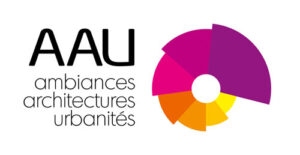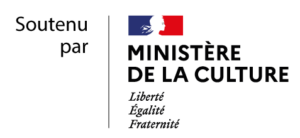Julien Laurent, Sociologist, post-graduate researcher for the Groupe de Recherche sur les Espaces Festifs (GREF), University of Quebec in Montreal (UQAM), in charge of geography courses and urban studies (UQAM), Canada
A visual and acoustic dynamic is created when a public space is taken over by the skateboard and its practitioners. This dynamic can be seen in the emergence of an ambiance that may be festive, playful or even competitive, based on the use of street furniture. In this way, a section of the city chosen for its decor, roller quality and architecture becomes a stage on which to be seen through physical performances that attract interest and above all catch other people’s eye. My works show that the street skaters build representations of certain sites with a typical ideal value that has meaning in their cultural practice (Laurent & Gibout 2010). Consequently, they demonstrate a potential to use and embellish them by figures that resemble modernized acrobatics, called tricks (Laurent, 2009).
To quote Chadoin (2010), we are therefore dealing with the hard dimension of the ambiance, which has an endless number of facets, through this use of the city. Regarding the social dimension, we can actually note two responses to the ambiance generated. On the one hand, that of the practitioners and their entourage, and the people who benefit from this event; and on the other hand, that of the residents, other fearful passers-by and the local authorities, who suffer the noise pollution caused by boards banging on the ground and note the visible deterioration caused to the street furniture. As a result, bans and severe restrictions are introduced to put an end to this disturbing ambiance and replace it with another more sterile, secure and functionalized ambiance.
This protean ambiance seems especially relevant when it comes to defining the various forms of a skateboard lifestyle (Veal, 2001; Wheaton, 2004). My ethnographical surveys, among various practising groups in Montpellier, show that skaters adopt their own ways of being, doing and thinking. These are not necessarily recognized or rewarded from one group to another. They may either generate an empathy leading to more or less fraternal relationships, or a distinction that creates a distance with those considered as intruders, who must be forced to leave through antagonistic relations and intimidation.
Furthermore, the notion of ambiance under its social aspect seems to refer to the concept of fun, the pleasure and excitement linked to a “good natured” mindset, based on dares won, shared victories, good laughs and close clowning around, which punctuate the frequent falls and other stunts. This ambiance may also take on a semi-professional gravity among the experts intent on performing well. The interaction between skaters is coloured by these two mindsets.
On the basis of these observations, we could raise the question of a transmission, between generations, of a set of behaviours that might give rise to diverse forms of ambiance. Is it possible to note among these individuals a capacity to adapt to the presence of their peers, or to generate a pleasant or obnoxious ambiance depending on the context? Is there a type of learning within the groups, with patterns of behaviour that can generate these forms of ambiance? Will the practitioner also learn to inflict and suffer various forms of ambiance in the context of his career in the sense of Becker?
The studies done in the framework of the Groupe de Recherche sur les Espaces Festifs (UQAM), aim to better define a form of well-being and urban good conduct that can be materialized in this way through a better understanding of the notion of ambiance.
References
Becker, H. (1985, 1ère éd. 1963). Outsiders. Sociologie de la déviance. Paris : Métailié.
Chadoin, O. (2010). La notion d’ambiance. Contribution à l’examen d’une invention intellectuelle postmoderne dans le monde de la recherche architecturale urbaine. Les Annales de la recherche urbaine, nº 106 pp. 153-159.
Laurent, J. & Gibout, C. (2010). Ces décors urbains qui invitent aux voyages : « L’imagibilité » chez les skaters de Montpellier. Les Annales de la recherche urbaine, nº 106 pp. 106-116.
Laurent J., (2009), « La ville et la culture des « jeunes » influencées par l’acrobatie : réflexion sur les ambivalences des pratiques urbaines », Loisir et société, vol. 31, n° 2, Presses Universitaires du Québec.
Veal A.-J., (2001), « Leisure, culture and lifestyle », Loisir et Société, vol. 24, n°2, pp. 359-376.Wheaton, A. (2004). Understanding lifestyle sports. Consumption identity and difference. Routledge : New York.



